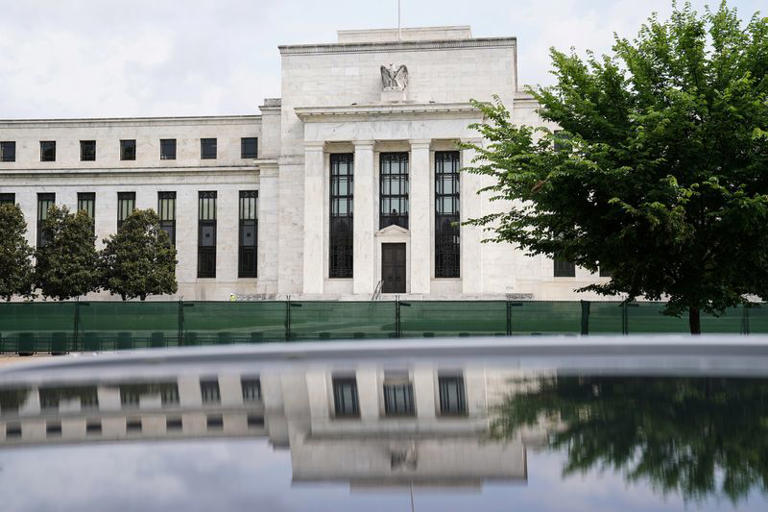The U.S. Federal Reserve’s decision-making process regarding interest rates is closely scrutinized by economists and financial markets alike, as it plays a pivotal role in shaping the trajectory of the economy. According to a Reuters poll conducted recently, a majority of economists are forecasting a key interest rate cut by the Fed in September, followed by another adjustment later in the year. However, there remains a notable risk that the central bank may opt for only one rate cut or none at all, highlighting the uncertainty surrounding monetary policy.
The divergence between economists’ forecasts and market expectations has been notable in recent months. While economists have remained steadfast in predicting two rate cuts, market sentiment has been more volatile. Initially, markets priced in only one rate cut, scheduled for November, before reverting back to expectations of two cuts. This fluctuation can be attributed to various factors, including economic data releases and shifts in global market conditions.
One significant factor influencing market sentiment was the revelation of official data indicating a slower-than-expected expansion of the U.S. economy in the last quarter. This, coupled with persistent inflationary pressures, contributed to concerns about the health of the economy and the need for accommodative monetary policy.
However, despite the consistent projections from economists, officials from the Federal Reserve have signaled a cautious approach to rate cuts. Some policymakers have emphasized the need to assess incoming data carefully before making any decisions on monetary policy adjustments. This cautious stance has led some economists to speculate that the Fed’s forthcoming “dot plot,” which provides quarterly projections of policymakers’ interest rate expectations, may show a more conservative outlook than initially anticipated.
In the latest Reuters poll, nearly two-thirds of economists predicted that the first rate cut would occur in September, echoing sentiments from previous surveys. Only a minority of respondents expected a rate cut as early as July, while none foresaw a reduction at the upcoming June policy meeting. This reflects a consensus among economists regarding the timing of potential rate cuts, albeit with some variation in opinions.
The rationale behind the anticipated rate cuts lies in the Fed’s strategy to calibrate its policies in response to evolving economic conditions. With indicators suggesting a need for easing amid softening growth and subdued inflation, economists project two quarter-point cuts this year. However, a significant minority of economists anticipate only one cut or none at all, underscoring the uncertainty surrounding the Fed’s decision-making process.
Factors such as elevated inflation, particularly in the personal consumption expenditures (PCE) price index, and low unemployment rates present challenges to an early rate cut. Median forecasts suggest that none of the inflation measures are expected to reach the Fed’s target of 2% until at least 2026. Additionally, economists anticipate the unemployment rate to remain stable around 3.9% until 2027, indicating ongoing tightness in the labor market.
Despite a modest first-quarter growth rate of 1.3%, the U.S. economy is projected to expand by 2.4% this year, outpacing the Fed’s current non-inflationary growth rate estimate of 1.8%. This optimistic growth outlook, coupled with concerns about inflation, has led some economists to advocate for a more cautious approach to rate cuts, emphasizing the need for careful assessment of economic data.
In summary, while the consensus among economists points towards rate cuts in September and beyond, there remains uncertainty regarding the extent and timing of the Fed’s monetary policy adjustments. The central bank’s decisions will be contingent upon evolving economic data, market conditions, and policymakers’ assessments of the risks to economic growth and inflation.
